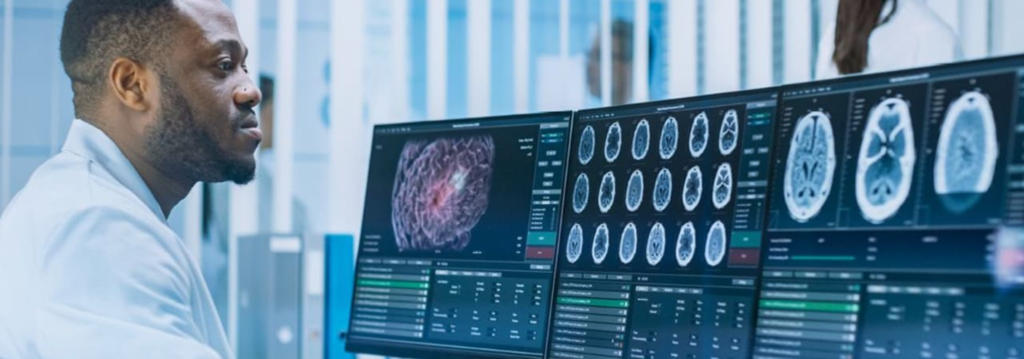PTC Therapeutics to launch first gene therapy directly administered into the brain
PTC Therapeutics, Inc. announced on July 20th, 2022 that Upstaza™ (eladocagene exuparvovec) was granted marketing authorisation by the European Commission. Upstaza is the first approved disease-modifying treatment for aromatic L-amino acid decarboxylase (AADC) deficiency and the first marketed gene therapy directly infused into the brain. It is approved for patients 18 months and older.
“Today’s approval from the European Commission for Upstaza for the treatment of AADC deficiency is momentous for patients, for PTC, as well as for the larger gene therapy community,” said Stuart W. Peltz, Ph.D., Chief Executive Officer, PTC Therapeutics. “We are proud to bring this innovative therapy to the marketplace so that patients may benefit. Upstaza is the first and only approved disease-modifying treatment for patients living with AADC deficiency. We are ready to deliver this long-awaited treatment to patients as soon as possible.”
During Upstaza clinical studies, patients went from not achieving any developmental motor milestones to demonstrating clinically meaningful motor skills from as early as three months following treatment, with transformational improvements shown to continue up to ten years after treatment. In addition, cognitive skills improved in all treated patients.1,2 Upstaza also reduced symptoms that cause potentially life-threatening and morbid complications.
Before treatment, our daughter had not met any development milestones. She suffered from oculogyric crises that evolved into hours of pain, and we were told she would be bedridden for life. After receiving Upstaza, she is now speaking, walking, running, and even riding horses. We’re thrilled with the EMA approval and the hope that this milestone brings to other children and families impacted by AADC deficiency.
Richard Poulin, Patient organisation Teach RARE founder, whose daughter was treated as part of a clinical trial.
The marketing authorisation is applicable to all 27 European Union member states, as well as Iceland, Norway and Liechtenstein.
References
1 Tai CH, et al. Long-term efficacy and safety of eladocagene exuparvovec in patients with AADC deficiency. Mol Ther. 2022;30(2):509-518.
2 Chien et al. AGIL-AADC gene therapy results in sustained improvements in motor and developmental milestones through 5 years in children with AADC deficiency. Poster presented at the 48th Annual Meeting of the Child Neurology Society, Charlotte, NC, USA, Oct 23-26, 2019.
3 Chien YH, et al. Efficacy and safety of AAV2 gene therapy in children with aromatic L-amino acid decarboxylase deficiency: an open-label, phase 1/2 trial. Lancet Child Adolesc Health. 2017;1(4):265-273.
About Upstaza™ (eladocagene exuparvovec)
Upstaza is a one-time gene replacement therapy indicated for the treatment of patients aged 18 months and older with a clinical, molecular, and genetically confirmed diagnosis of aromatic L‑amino acid decarboxylase (AADC) deficiency with a severe phenotype. It is a recombinant adeno-associated virus serotype 2 (AAV2)-based gene therapy, containing the human DDC gene.1 It is designed to correct the underlying genetic defect, by delivering a functioning DDC gene directly into the putamen, increasing the AADC enzyme and restoring dopamine production.2,3
The efficacy and safety profile of Upstaza has been demonstrated across clinical trials and compassionate use programmes.1 The first patient was dosed in 2010. In clinical trials, Upstaza demonstrated transformational neurological improvements. The most common side effects were initial insomnia, irritability and dyskinesia.
Administration of Upstaza occurs through a stereotactic surgical procedure, a minimally invasive neurosurgical procedure used for the treatment of a number of paediatric and adult neurological disorders. The Upstaza administration procedure is performed by a qualified neurosurgeon in centres specialised in stereotactic neurosurgery.
About aromatic L-amino acid decarboxylase (AADC) deficiency
AADC deficiency is a fatal, rare genetic disorder that typically causes severe disability and suffering from the first months of life, affecting every aspect of life – physical, mental and behavioral. The suffering of children with AADC deficiency may be exacerbated by: episodes of distressing seizure-like oculogyric crises causing the eyes to roll up in the head, frequent vomiting, behavioral problems, and difficulty sleeping.
The lives of affected children are severely impacted and shortened. Ongoing physical, occupational and speech therapy, and interventions, including surgery, also are often required to manage potentially life-threatening complications such as infections, severe feeding and breathing problems.
About PTC Therapeutics, Inc.
PTC is a science-driven, global biopharmaceutical company focused on the discovery, development and commercialisation of clinically differentiated medicines that provide benefits to patients with rare disorders. PTC’s ability to innovate to identify new therapies and to globally commercialise products is the foundation that drives investment in a robust and diversified pipeline of transformative medicines. PTC’s mission is to provide access to best-in-class treatments for patients who have little to no treatment options. PTC’s strategy is to leverage its strong scientific and clinical expertise and global commercial infrastructure to bring therapies to patients.
www.ptcbio.com





